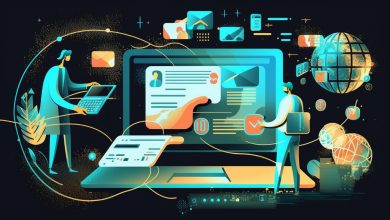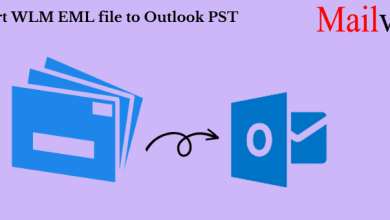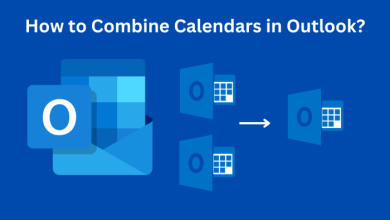Still Doing HR Manually?HRMS Software Will Blow You Away

Businesses that are smart don’t have the time to complete basic or repetitive.
HR duties by hand or executing the same long procedures over and over. With the help of an Human Resources Management System (HRMS Software).
However they will easily and quickly automatize these time-consuming
& boring processes. which allows HR teams to concentrate on other activities that add value.
What is HRMS software?
HRMS software can be described as a system that integrates the management,
automation, and administration of various HR procedures in an organisation.
It performs a variety of tasks like organizing and managing employee information and
the organizational data of a company and makes it easy to access.
The demand in HRMS software has increased and there are a variety of software options available,
which include Human Capital Management (HCM) and Human Resource Information System (HRIS)
that each offer different options, features, and capabilities with different prices.
Understanding the differences between HRMS, HRIS and HCM
The three above describe methods that make use of cloud technology as well as
information database technology to manage the management of employees. Analysts, vendors and marketing experts all seem to use both terms synonymously. There is, however, a subtle distinction between HRMS HRIS and HCM.
- Human Resource Management System
- Human Resource Information System
- Human Capital Management
There will always be some confusion between them However, here’s a more simplified distinction. An HRIS provides basic HR functions to oversee people processes, policies, and procedures.
HCM encompasses the workforce and talent management area, while HRMS solutions provide
a variety of features that are comprehensive, such as benefits and payroll that serve every HR-related function.
Finding the perfect HRMS software for your company
With the number of providers available out there, deciding the HRMS software
that’s in tune to your business’s requirements isn’t as simple as it seems.
Before you begin your search for a new HR software, think about the most important aspects
of the ways your business will utilize your system for HR. For instance is your company an entrepreneur in a small company seeking a simple-to-implement basic system
that will work with the budget of a small business, but with the possibility of adding additional
functions in the future? Would your business need a more extensive system that
includes the complete array of HR tools that you can completely personalize across all aspects of your business?
Whatever the most crucial factors to your business consider the various
options and avail free trials or tailored training sessions to make sure your HRMS software
you select is the best fit for your company.
Here’s a 10-step guideline to assist you select the best HRMS software for you:
Is the HR suite simple to comprehend and is it easy to understand and
Does the HR software offer all the features you require or do you need to purchase
separate feature bundles, increasing the cost?
How is the technical support provided by your vendor?
Are your employee’s confidential data be safe? Does the vendor hold security certificates such as ISO 27001?
Are the prices clear? Do you think there is a chance of surprise charges or hidden costs?
Does the HR solution come the regular industry-specific reports?
Can you make custom reports without programming?
How well is the integration capabilities that the system has?
Can it be adapted? You can upgrade or lower the plan in order to satisfy the demands of business?
Is the company able to count on a client base?
What HRMS software is able to do to help your company gain an advantage
Let’s look at the business benefits of working with software for HR management within your company. As implementing a system like this is a significant choice, you need to ensure that it can provide tangible advantages.
1. Improved communication throughout the company
The HR function of an organization is about its employees-securing the top talent,
training the employees, helping them resolve issues, and eventually improving the performance of the business because of it.
2. Reduce administrative costs and reduce costs
The HR staff members are accountable to perform a variety of tasks on the daily or weekly basis,
from sourcing and transferring new employees to overseeing the appraisal process for the company.
A HR system that is able to easily automate workflows, keep track of changes to information
about employees and record key KPIs for people and business with the click of a button is likely to
reduce time and money contrasted with manual processes.
Employing HRMS software to automatize HR processes within your company is likely to
reduce administrative expenses over the long term and even after taking into consideration the
initial cost of the system and its ongoing running expenses. It’s possible that you’ll require less HR managers to handle manual tasks.
3. Make sure that data is consistent and accurate analysis
HRMS software allows you to monitor employee information like absence information as
well as turnover figures and many other important HR metrics.
Your company will gain by having access to this information,
and the capability to effectively analyze it to aid in making critical business decisions as well as
formulate new business plans.
What would be the main features of a perfect HR system?
HRMS suites aren’t an all-inclusive system, but a system that is easily set up and
customized to suit the requirements of your company optimally. Different systems come with
different capabilities, and even within the same one, and you are able to select the options you’d
like to include in your system.
This is a quick summary of the most commonly used and useful functions:
1. Onboarding and recruitment
HRMS software lets organizations set up workflows that are smoother and streamlined
shortlisting of candidates as well as hiring, creation of contract letters and offer letters,
and the creation of employee records as well as uponboarding.
2. Management of talent and performance
Automate the annual appraisal process by creating templates for forms and workflows to collect feedback from employees on their performance. Reports can be run to evaluate the performance
of employees across the company and to identify training requirements or potential promotions.
3. Time management and scheduling
Line managers can manage the work schedules of their teams, approve the team’s
leave requests and make sure they have enough coverage for busy times quickly and efficiently
through the automated functions found in many HRMS platforms.
4. Analyzing the data of workers
It is possible for users to run variety of reports to generate relevant statistics on their
employees and then utilize this information to help inform the overall strategy of the company.
The five most used HRMS software
Once you’ve identified your requirements, you’ll need to choose the appropriate HRMS. There isn’t the ideal solution for everyone. You must choose based on the specific needs of your company.
These are the top 5 choices: A good starting point for with your research.
1. BambooHR
For small and medium-sized companies, BambooHR offers a range of HR solutions, including
the such as Applicant Tracking System (ATS) as well as timesheets management, leave management and onboarding. With this powerful software, HR workers will not have to change between various software options to perform each HR task.
2. Kissflow HR Cloud
Kissflow HR Cloud offers an all-inclusive suite of HR applications that are designed to improve the hiring-to-retire cycle. The system offers recruiting management, employee onboarding as well as time management, performance management and learning management capabilities.
Attention to the latest HR standards HR processes, HR processes, pertinent reports,
and compliance guidelines make Kissflow HR Cloud an easy-to-use but powerful HR application that is rich in understanding.
3. Workday
It is designed specifically for companies designed for business, specifically for enterprises,
HCM ( Human Capital Management) aids users get insights into global workforces. With a user-friendly experience, the tool has been created to boost employees’ engagement.
HR-specific features include reporting Analytics, Reporting and Global Compliance
Internal Controls and Audit Workforce Planning, Recruiting and Talent Management,
as well as Learning, Compensation, Benefits, Payroll Management Time and Absence and expenses.
4. Namely
This is a full HRIS or Human Resources Management software. The functions covered are Payroll Management of Benefits, Talent management, time management, and ESS. Particularly, it is aimed at expanding SMBs.
5. Success Factors
This HRMS software tool is known as a solution that is centered around people and places
the user at the heart of their method of HR. SuccessFactors provides tools to take charge of
Core HR, Payroll time and attendance management as well as Learning and Development and much more. Some users have expressed their concerns about it not being complete enough for use as a HR tool.
Conclusion
A reputable Free HRMS software can automate the mundane administrative duties and allows
HR executives to focus on the strategic aspects of their job regardless of their organisation’s size. Through the implementation of systems for managing HR,, companies can increase employee satisfaction and decrease turnover.
If you’re looking for the ideal HR software try giving Superworks HR Cloud an opportunity. Use our no-cost demonstration to discover how simple managing your HR can become when you use the right HR software.
To Read More: smpupm



